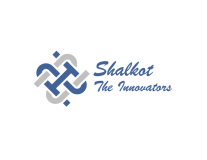How to increase college enrollment?. Colleges and universities seeking to bolster their enrollment numbers can employ several strategic initiatives across various fronts.
Enhancing Brand Awareness and Communication: Utilizing Targeted Online Marketing: Employ search engine optimization (SEO) techniques to ensure the institution’s visibility in relevant online searches. Employ social media platforms strategically to engage with prospective students and offer glimpses into campus life. Content Marketing: Develop informative and captivating content highlighting academic programs, campus culture, and career pathways. Feature the success stories of alumni to inspire potential students and showcase the institution’s impact. Personalized Communication: Move beyond generic outreach methods by leveraging data to tailor communication with prospective students. Personalized messages reflecting individual interests and academic aspirations can enhance engagement and connection. How to increase enrollment in college?
Making College Accessible and Appealing: Financial Aid Transparency and Assistance: Provide clear information on available financial aid options and scholarships. Offer workshops and support services to assist students in navigating the financial aid process effectively. Flexible Learning Options: Expand offerings to include online and hybrid programs alongside traditional on-campus options, catering to a broader range of student preferences and needs. Highlighting Career Support: Emphasize the institution’s comprehensive career services, including resume workshops, internships, and networking opportunities with potential employers. how to increase student enrollment in college?
Building strong relationships: Investing in Community Outreach: Forge partnerships with local schools and organizations to engage with prospective students early on. Host college fairs and informational sessions to increase awareness about the institution. Streamlining the Admissions Process: Simplify the application process to make it transparent, user-friendly, and efficient. Offer multiple application deadlines to accommodate diverse student timelines. Investing in Student Support: Prioritize the provision of robust academic and personal support services to current students. Satisfied students serve as valuable advocates, attracting others through positive word-of-mouth recommendations.
Focusing on the Value Proposition: Highlighting outcomes and ROI: Clearly articulate the career opportunities and earning potential associated with the institution’s academic programs. Demonstrate the return on investment (ROI) a degree from the institution offers. Showcasing unique programs and specializations: Identify and promote distinctive academic programs or specializations that differentiate the institution from competitors and appeal to prospective students. Investing in Faculty and Facilities: Attract and retain high-caliber faculty members and continuously enhance campus facilities to provide an exceptional learning environment that resonates with prospective students. By implementing these comprehensive strategies, colleges and universities can effectively elevate their enrollment rates and attract a diverse and talented student body. Success in enrollment enhancement lies in clear communication, accessibility, student-focused initiatives, and a compelling value proposition that resonates with prospective students.
 Scholarships and Admission News and Info Shalkot
Scholarships and Admission News and Info Shalkot